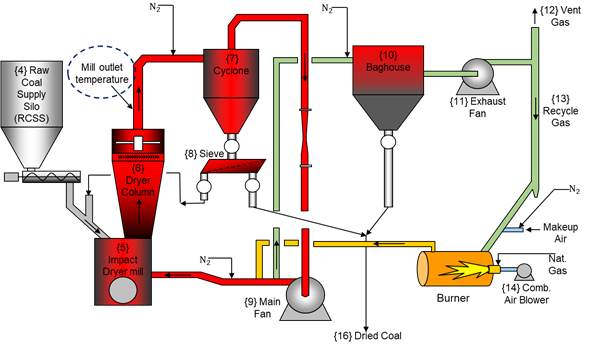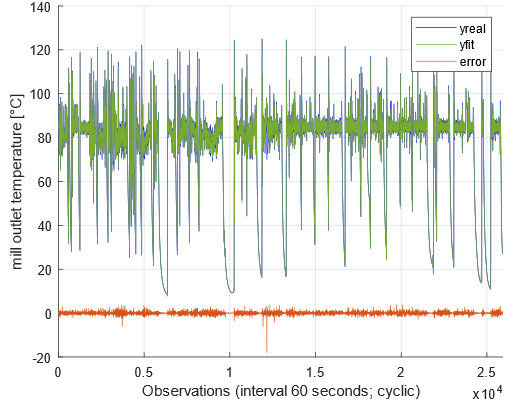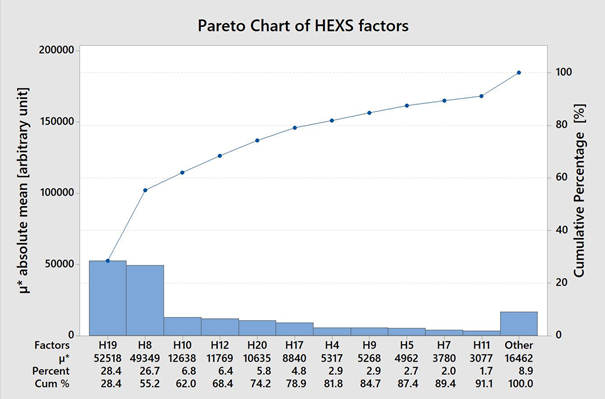Application of A Process Model to Define Potential Operational Functional Failure Conditions
Paul Schepers – Tata Steel, Europe (October 2018 – October 2019)
Thesis: https://essay.utwente.nl/79830/

SUMMARY
Today, manufacturing systems are complex with respect to interconnective technologies, operations, and maintenance processes. In Industry 4.0, the number of variables involved in complex systems is vast; as such, systems can exhibit non-linear interactive trends that may be beyond human understanding. Thus, addressing the complexity of such systems requires the utilization of advanced strategies by which data can be systematically processed into information. The information can explain the variability and thereby assist in making more informed decisions such as where to allocate resources, assist in developing strategies for process control and maintenance activities. In maintenance, and specifically in predictive maintenance (PdM), variability insights can be utilized to prevent and delay system failures just-in-time.
Sensitivity analysis (SA) can assist in understanding such complex systems. SA can identify the influence of input parameters in relation to a response; thus, it can be utilized to understand the behaviour of complex systems (such as operations involved in production processes), and in succession, to facilitate the development and maintenance of these systems. This study aims to analyse and illustrate how an existing process model of a complex system can be utilized for PdM.
To achieve this aim, the raw material preparation plant (RMPP) that processes coal within the HIsarna pilot plant (Tata Steel Europe) is utilized for a case study of this work. The process model --the HIsmelt Excel simulation (HEXS) model-- describes thermodynamic process behaviour of a complex RMPP. A schematic overview of the sub-systems modelled in the HEXS model of the RMPP is presented in Figure 1. This model can be utilized to determine process conditions to operate the RMPP, such as material composition, flow rates, temperatures, and other settings. Upon acquisition of the HEXS model, it has not been validated against HIsarna’s RMPP operations. Therefore, the model must first be validated against a data-driven model, before it can be utilized in a SA. Should the HEXS model be found to reasonably reflect the real-world process of the HIsarna RMPP, then it could provide insights into the parameters that influence the actual system and sub-systems of the HIsarna RMPP.

Figure 1 Schematic representation of sub-systems of the raw material preparation plant simulated in the HEXS model. Encircled by the blue dashed line is the response “the mill outlet temperature” for the SA and data-driven model.
The data-driven model is constructed by means of supervised machine learning (SML) and trained with historical HIsarna RMPP operating data. The model describes a particular behavior exhibited in the HIsarna RMPP, being the mill outlet temperature (MOT), and is validated against a test set before validating the HEXS model. When both models are validated, they are utilized in the SA to identify the potential operational failure factors of the RMPP. Lastly, the HEXS model is utilized to identify potential operational functional failure conditions.
To identify a suitable regression algorithm for the data-driven model, nineteen regression algorithms are trained by k-fold cross-validation SML and evaluated on their cross-validation root means square error (CV RMSE). The predictive performance of the best performing model is assessed by validating it with the actual MOT response. This best performing data-driven model is defined by the lowest CV-RMSE of the algorithms, the best performing algorithm its predictions are validated with the actual monitored MOT response as shown in Figure 2. This best performing algorithm is utilized to validate the HEXS model with respect to the MOT of the HIsarna RMPP for a comparable set of inputs.

Figure 2. The GPR Rational Quadratic algorithm trained with 100% of the complete March dataset. This data-driven model prediction (y-fit) has an RMSE of 0.52 °C, this equals an error of approximately 0.4% of the entire operating domain.
During the validation experiments, the majority of validity agreements between the HEXS model and the data-driven model were observed, thus indicating the validity of the HEXS model. However, a minor amount of validity disagreements exists between both models. Therefore, it cannot definitively be concluded that the HEXS model is representing the MOT of the HIsarna RMPP under all operating conditions.
An extended Morris SA method is performed on the case study of a commercial RMPP. The conventional Morris method does not provide normalization of ratings for the relative contribution of influence with respect to other compared factors. The proposed extended Morris method accounts for this by allowing the comparison of normalized values of different models, such as the SA results from the HEXS and data-driven model. Normalization is achieved by utilizing the cumulative percentages of a Pareto plot as presented in Figure 3. Furthermore, it is demonstrated that presenting SA results in a Pareto plot allows to distinguish between the “vital few” and the “useful many” factors dominantly influencing the response parameter. Although, it is not evident if the HEXS model is valid, in the SA the burner outlet temperature, factor H19 in Figure 3, is identified to be the most influential factor to the MOT, supporting the assumption of repetitive validity.
Finally, this research demonstrates that the HEXS process model can be utilized for defining potential dominant operational functional failure factors and potential risk full operating conditions in a complex system. This work thus demonstrates that a process model can assist PdM by defining potential thermodynamically related failure conditions and by identifying their related dominant influencing factors.

Figure 3. Pareto bar plot of the absolute mean µ* taken from the mean elementary effects of the SA for 20 input factors utilized in the HEXS model. The factors are ranked in descending order of influence to the output “mill outlet dry-bulb temperature.”
KEY RESULTS
· Data-driven model constructed by means of SML that has an error of approximately 0.4% of the entire operating domain, which therefore allowed validation of the HEXS process model.
· The extended Morris is a newly procedure that allows to evaluate the space-filling of the random sampling plan of elementary effects of the input space for the SA, and the extended method demonstrated that presenting SA results in a Pareto plot allows to distinguish between the “vital few” and the “useful many” factors dominantly influencing the response parameter.
· Identification of influential factors that cause dominant variability to a response within a complex system.
· Identification of potential functional failure conditions by utilizing a process model of a complex system
